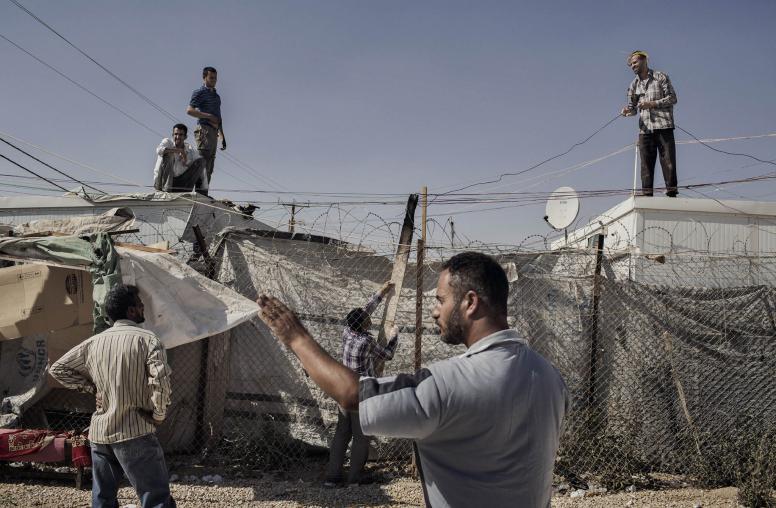Is War Weariness Extending to Winter-Storm Ravaged Syria’s Humanitarian Emergency?

“The worst winter storm in two decades” hit Syria and neighboring countries this week, bringing snowfall to Damascus and Aleppo even as fighting raged on, according to a vivid and worrying account by the Reuters news agency today. The “relentless extreme weather” has compounded the crisis of Syrians who have been displaced inside the country by the fighting or who fled to refugee camps across the borders, and “dozens” have died as a result of the conditions, Reuters reported, citing opposition activists.
Temperatures reached minus 6 Celsius (22 Fahrenheit) on the night of Jan. 8 in the eastern suburbs of the capital Damascus, Reuters said. The agency cited an opposition activist, Abu Othman, as saying: "Our conditions are getting worse and worse with this storm. Everyone is freezing, there is nothing to heat ourselves with.”
USIP Program Officer Rachel Brandenburg flagged the potential dangers of winter’s onset here in the Olive Branch on Jan. 3. She outlined the risks and the urgings of the United Nations for more aid in the biggest short-term humanitarian appeal in its history.
“There is a growing food problem because all the rain and now snow has made road conditions very dangerous," Reuters quoted Othman saying in an interview over a satellite Internet connection. Another activist told the agency that some Syrians who fled bombardments were holing up in caves in the country’s north to keep dry.
The U.N.’s World Food Programme was appealing for more implementing partners because it doesn’t have the capacity to feed everyone who needs it in the Syrian crisis, according to The New York Times yesterday. The organization has been able to provide food to only 1.5 million of the 2.5 million Syrians who need it inside the country, mostly because of the dangers of distribution in the hardest-fought areas. The U.N. program has withdrawn its staff temporarily from offices in Homs, Aleppo, Tartous and Kurdish-run Qamishli because of the severity of armed conflict in those locations, the British newspaper The Guardian reported. Security risks also have prevented deliveries to Syria via the port of Tartous, the newspaper said yesterday.
Elizabeth Byrs, a spokeswoman in the agency’s Geneva headquarters, told the Times that acute fuel shortages in Syria had delayed deliveries and had severely increased the price of bread because bakeries need fuel for their ovens.
In Aleppo, bread is going for about 250 Syrian pounds for a kilogram, or about $3.50. That’s “at least 50 percent higher than in other parts of Syria and at least six times more than its cost when the Syrian conflict began nearly two years ago,” the Times reported in a story that also painted a grim picture of the deteriorating conditions in refugee camps across the border. One refugee, who said he defected from his position as a colonel in the Syrian army, told the Times, “I can’t remember being so cold.”
What do you think: Is war weariness extending to winter-storm ravaged Syria’s humanitarian emergency?


